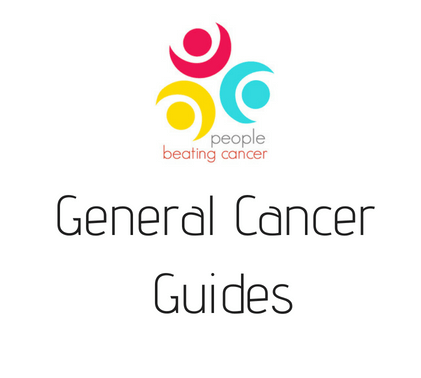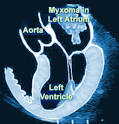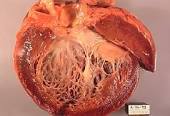
Diagnosed with Cancer? Your two greatest challenges are understanding cancer and understanding possible side effects from chemo and radiation. Knowledge is Power!
Learn about conventional, complementary, and integrative therapies.
Dealing with treatment side effects? Learn about evidence-based therapies to alleviate your symptoms.
Click the orange button to the right to learn more.
- You are here:
- Home »
- Blog »
- pediatric cancer »
- Cardiomyopathy of Pediatric Cancer Chemo- Fix NOW!
Cardiomyopathy of Pediatric Cancer Chemo- Fix NOW!

…the risk of severe, life-threatening or fatal cardiomyopathy by age 40 was evaluated via agent-specific Cox proportional hazards models.
Chemotherapy-induced cardiomyopathy as a late stage side effect of cancer patients of all ages undergoing certain chemotherapy regimens has been known for years. The difficulty with this late stage side effect is that it does not usually rear its ugly head for years or decades after cancer treatment. Parents of pediatric cancer patients worry about the here and now more than quality of life 20 or 30 years from now. As a parent myself, I understand this feeling.
Though I wasn’t a pediatric cancer patient undergoing cardiotoxic chemo years ago I was a 34 year old undergoing cardiotoxic chemo in 1995. I was diagnosed with chemotherapy-induced cardiomyopathy last month. No, the conventional therapies did not cure my blood cancer…
After 25 years studying the short, long-term and late stage side effects of conventional cancer therapies I believe that the main issue preventing conventional oncology from reducing this late stage side effect is the concept of “evidence-based” therapies. In other words, do you consider evidence to be the sole realm of organizations like the FDA? Or are you willing to consider studies citing populations or animal studies or even test tube studies?
After struggling with the short, long-term and late stage side effects cause by my own toxic conventional therapies I have learned to puruse nutrition, lifestyle and supplementation because of the studies that support non-conventional therapies.
Though I started to late to avoid the damage to my heart caused by doxorubacin, cytoxan, busulfan and melphalan chemotherapy all in 1995, I was able to slow and minimize the damage done to my heart.
If you are a former pediatric cancer patient, I encourage you to learn about heart healthy nutrition, lifestyle and supplementation to minimize your own chemotherapy-induced cardiomyopathy.
Scroll down the page, post a question or a comment if you would like to learn more about evidence-based, non-toxic heart healthy therapies.
Thanks
David Emerson
- Cancer Survivor
- Cancer Coach
- Director PeopleBeatingCancer
Recommended Reading:
- AYA, Childhood Cancer Survivors’ Future Risk of Heart Disease
- Can Pediatric/AYA Cancer Late-Stage Side-Effects be prevented?
- Childhood Cancer Survivor? Plan for the worst, hope for the best…
Mitoxantrone for Childhood Cancer More Cardiotoxic Than Thought
“In pediatric cancer patients, mitoxantrone appears to be at least ten times as cardiotoxic as doxorubicin therapy, while daunorubicin therapy may be less so, according to a large cohort study.
“With 5-year survival of childhood cancer now reaching nearly 85%, balancing the potential long-term adverse effects of otherwise effective cancer treatments is an important consideration,” researchers write in JAMA Oncology, online January 31.
In children, “a doxorubicin to mitoxantrone substitution rule of 4:1 has been commonly accepted for both anti-tumor efficacy and toxicity…”
To provide more robust evidence, the team studied more than 28,000 childhood cancer survivors (median age at diagnosis, 6.1 years), including
- 9,330 treated with doxorubicin,
- 4,433 with daunorubicin,
- 342 with epirubicin,
- 241 with idarubicin, and
- 265 with mitoxantrone.
After adjusting for factors including chest radiotherapy and age at cancer diagnosis, the risk of severe, life-threatening or fatal cardiomyopathy by age 40 was evaluated via agent-specific Cox proportional hazards models.
After a median follow-up of 20 years, there were 399 cases of cardiomyopathy. Relative to doxorubicin, the agent-specific cardiomyopathy equivalence ratio was 0.6 for daunorubicin, 0.8 for epirubicin and 10.5 for mitoxantrone.
“In contrast to the commonly used 4:1 (mitoxantrone to doxorubicin) and 1:1 (daunorubicin to doxorubicin) ratios for late cardiomyopathy, the ratios we found were more like 10+:1 and about 0.5:1, respectively,” Dr. Chow told Reuters Health by email.
“These findings may impact the choice of anthracyclines/anthraquinones in future treatment protocols,” he said.
In particular, he and his colleagues conclude, “our findings may . . . allow for better personalization when regimens with equivalent anticancer efficacy may be evaluated more accurately with respect to their long-term cardiotoxicity risk.
SOURCE: https://bit.ly/2Dxj1Up
JAMA Oncol 2019.



